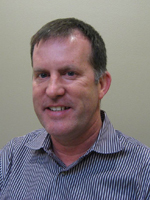|
One
of my favorite “techno” songs is a song by the band Daft Punk called
“Technologic”. According to Wiki: “This song features an
electronically pitch-raised voice chanting imperative statement
related to technological pursuits”. “"Plug it, play it, burn it, rip
it, drag and drop it, zip-unzip it" are spoken in rhythm to a
percussive beat”. Hmm, that doesn’t sound too different than some
days in a busy MRI department.
We are often speaking to each other and to patients through intercom
systems, quick phone calls, emails; even text messaging is used at
times to communicate in a department filled with the sounds and
rhythms of MRI sequences. We have developed our own language, even
separate from the technical words used in our jobs. Screen it, scan
it, check it, flip it, are words that were not found in the books I
read to become an MRI technologist. These words tend to de-humanize
our job and can make us forget what “it” is.
I am all for getting the job done and moving through the workload of
the day, but I think we need to pause and remember the importance of
our interactions with patients. “Flip It” is a term used in a
department formerly managed by me. It is a term to describe putting
a patient back into the transport system queue for returning to
their room. Because of the speed at which some scans are completed,
we are “flipping” them in the system immediately after confirming
their arrival in the department. It is amazing that not so many
years ago, MRI scans took well over an hour to complete especially;
when factoring in the screening conversations and waiting for the
radiologist to walk over and check scans before the patient left.
Now with screening sheets faxed prior to patients arriving, with
protocols as short as 5 minutes total for some things, with
radiologists immediately reviewing images on PAC’s, it is possible
for there to be little to no direct interaction with patients. Gone
are the days of developing little mini-relationships with our
patients as we partnered with them to figure out how to get the best
images out of the MRI beast. I remember working with patients to
obtain great exams, in spite of the machine not wanting to
cooperate; a real “us versus it” partnership.
The problem is that the “its” have changed. No longer is the machine
the “it”, but instead the “it” is the patient. These “it’s” are
patients who are often scared to death of what you may find or
confirm. They have frequently heard the MRI war stories from their
family and friends about the experience of being left for hours in a
cold machine with no contact. Often they share stories of
overhearing conversations that could mean many different things or
being talked down to as if they should just know how to do the
things we ask them to do.
We should fight the urge to become the very stereotype that at times
has described our profession. That is we should not be unfeeling
button pushers who have no real compassion for the people in their
care. We do not want to be known as technological nerds that care
more for machines than people. I know this is an unfair
characterization of most if not all of the people I work with; but
in the adrenaline rush of getting through the day, it is easy to
lose perspective. The backlog of patients or the next patient
waiting becomes more important than the very patient in front of our
face. Getting it done, and moving on becomes the name of the game.
I once worked for a department administrator who started requiring
each division manager and supervisor to directly interact with at
least one patient a day for the sole purpose of asking them how they
are doing and was there anything we could do to improve their visit
or their next visit. These answers were recorded and we meet as a
group once a week to discuss. This type of interaction helped me
tremendously to put the “it” back where “it” belongs. Instead of
approaching a patient because there was a problem to fix and I am
looking for the quickest way to solve or calm them down, I could
actually look at someone, smile, ask them how they are doing, and
then genuinely interact with them without having to worry about the
schedule or what their “protocol” was. The positive effect on my
perspective was great and I implemented something similar with each
staff member. The results were even better patient satisfaction and
employee satisfaction scores. Screen it, scan it, check it, flip it
are all fine words to help get the work done, but they cannot
replace the need for a warm smile, direct eye contact, and even the
occasional heartfelt hug.
So here’s to putting the “it” back where “it” belongs.
Go ahead, FLIP IT…… the page I mean.
|

